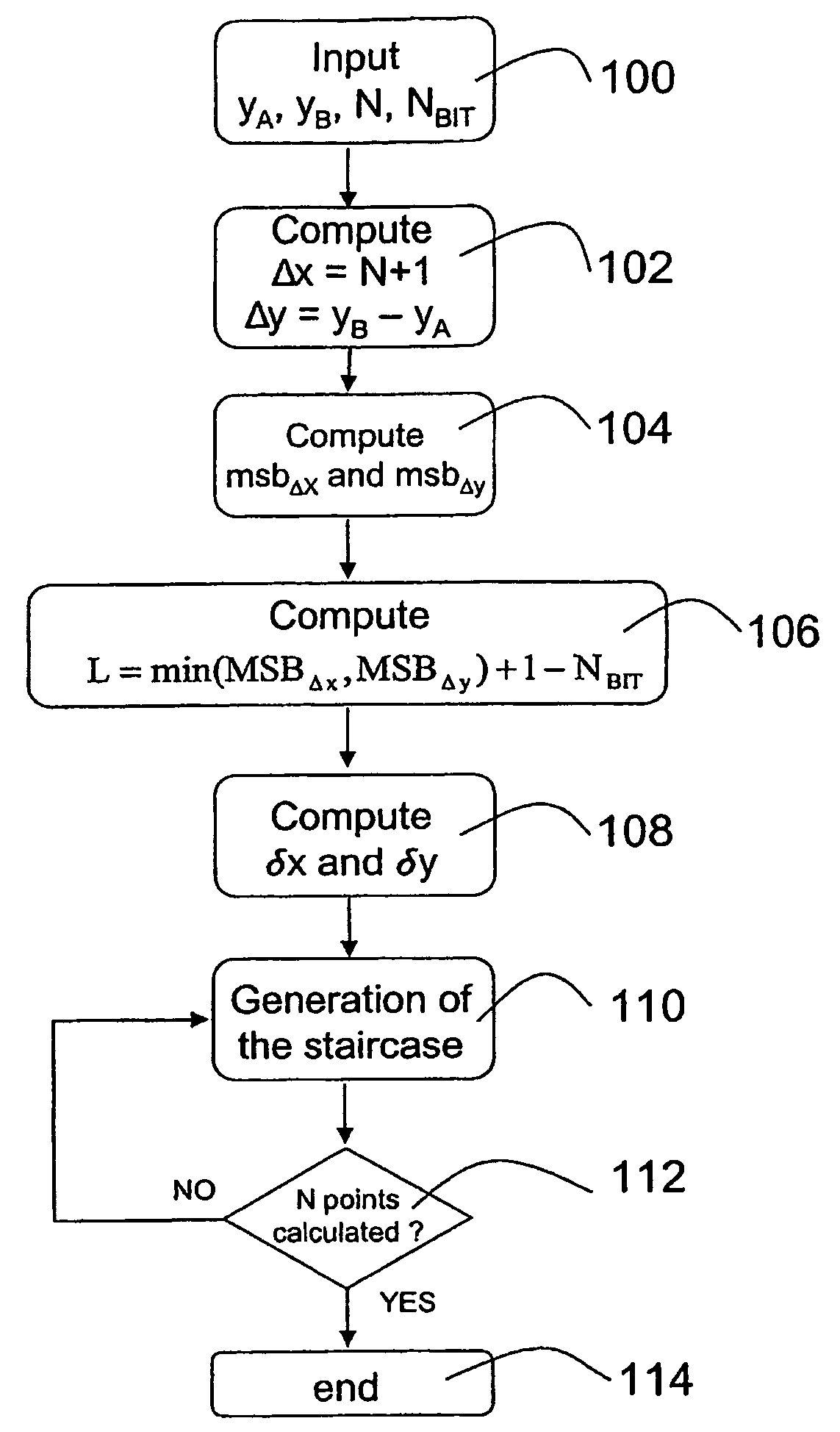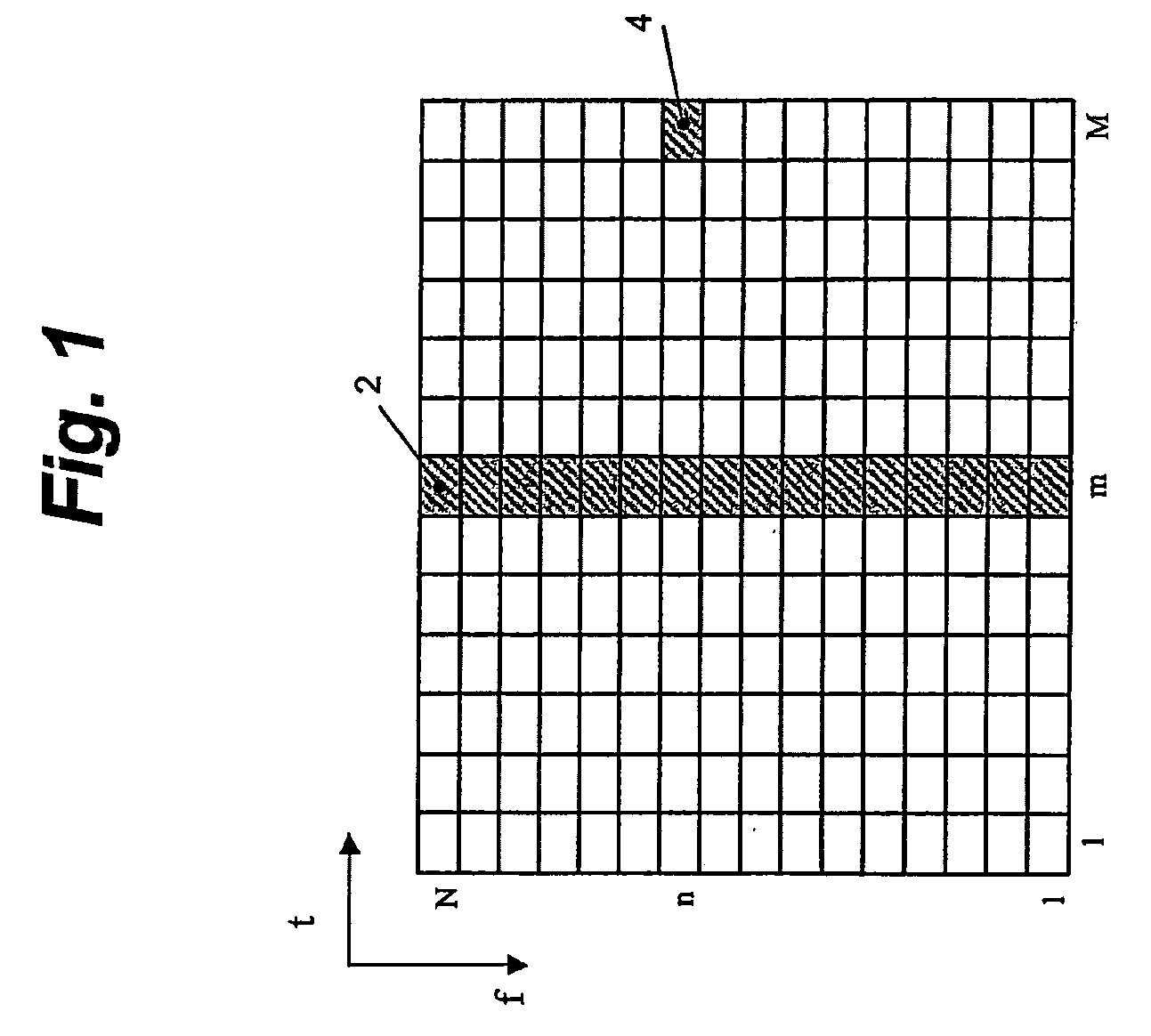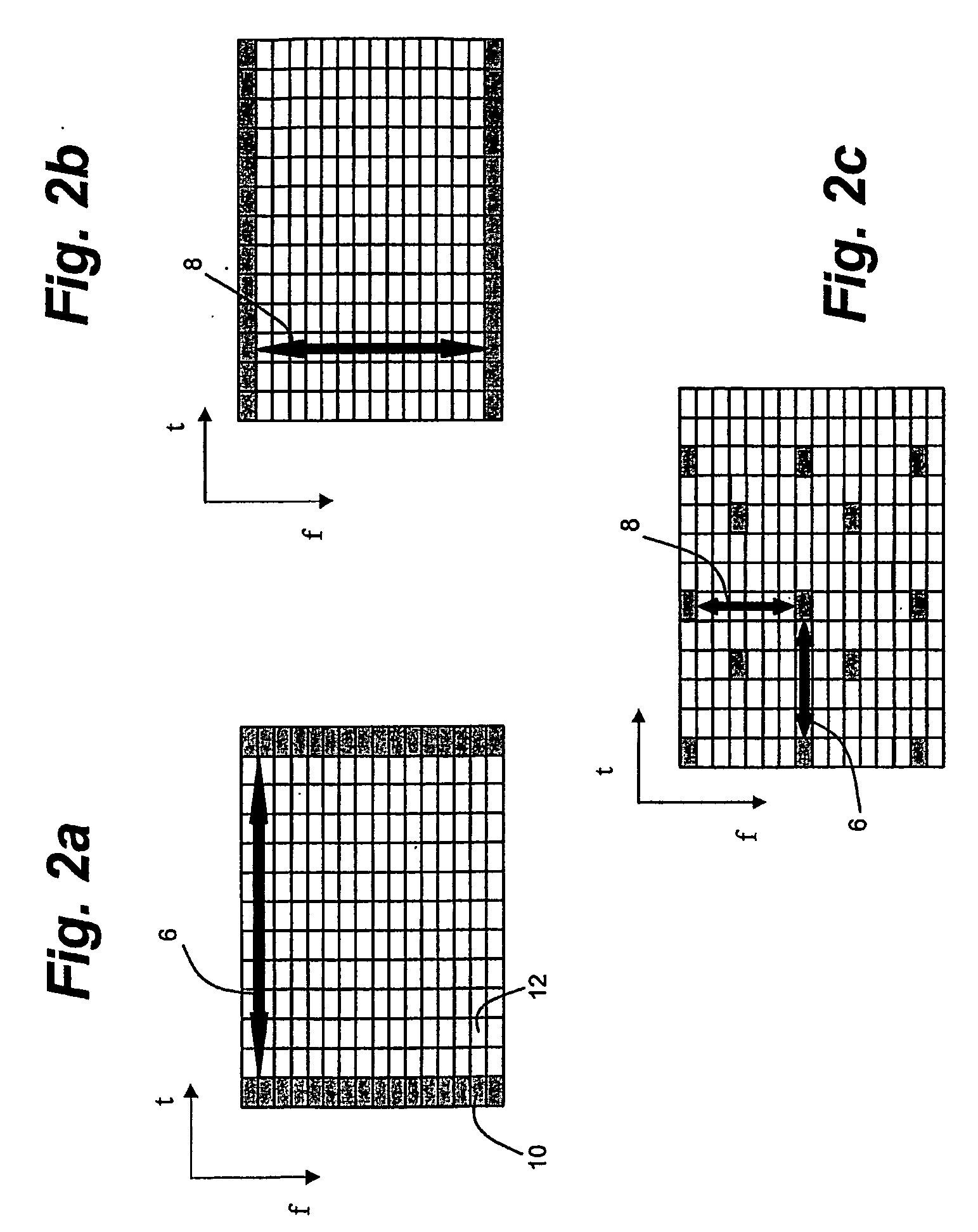Interpolation Method and a Related Device for Channel Estimation in Communication Systems
a communication system and channel estimation technology, applied in the field of interpolators, can solve the problems of unsuitable channel estimation and unsatisfactory interpolation methods in the art, and achieve the effect of cost-effectiveness and flexible variation
- Summary
- Abstract
- Description
- Claims
- Application Information
AI Technical Summary
Benefits of technology
Problems solved by technology
Method used
Image
Examples
example 1
[0089]Input Data Of The Interpolation Algorithm[0090]Number of interpolated values: N=11[0091]First known point: A=(xA,yA)=(0, 10)[0092]Second known point: B=(xB,yB)=(xAN+1,yB)=(0+11+1,18)=(12, 18)[0093]Minimum resolution of δx and δy in bits: NBIT=2
[0094]First Step: Calculation of the Interval Lengths Δx and Δy
Δx=xB−xA=12−0=12 =11002
Δy=yB−yA=18−10=8=10002
[0095]Second Step: Calculation of L[0096]MSBΔx=3[0097]MSBΔy=3
L=min(MSBΔx,MSBΔy)+1−NBIT=min(3,3)+1−2=2
[0098]Third Step: Calculation of δx and δy
δx=Δx>>L=11002>>2=112=3
δy=Δy>>L=10002>>2=102=2
[0099]Fourth Step: Generation of the Interpolation Function. The ordinate of the interpolated points is kept constant for a group of δx consecutive points (hold step) and then varied of δy (variation step). The process starts from the known point A and is repeated iteratively until N interpolated points between A and B are generated. In this case all the steps of the interpolation function have the same length and each step is composed of δx=3...
example 2
[0100]Input Data of the Interpolation Algorithm[0101]Number of interpolated values: N=10[0102]First known point: A=(xA,yA)=(0, 5)[0103]Second known point: B=(xB,yB)=(xA+N+1,yB)=(0+10+1,28)=(11, 28)[0104]Minimum resolution of δx and δy in bits: NBIT=2
[0105]First step: Calculation of the Interval Lengths Δx and Δy
Δx=xB−xA=11−0=11=10112
Δy=yB−yA=28−5=23=101112
[0106]Second step: Calculation of L[0107]MSBΔx=3[0108]MSBΔy=4
L=min(MSBΔx,MSBΔy)+1−NBIT=min(3,4)+1−2=2
[0109]Third step: Calculation of δx and δy
δx=Δx>>L=10112>>2=102=2
δy=Δy>>L=101112>>2=1012=5
[0110]Fourth Step: Generation of the Interpolation Function. The ordinate of the interpolated points is kept constant for a group of δx consecutive points (hold step) and then varied of δy (variational step). The process starts from the known point A and is repeated iteratively until N interpolated points between A and B are generated. In this example the last step of the interpolation function has a different length because it is composed o...
PUM
 Login to View More
Login to View More Abstract
Description
Claims
Application Information
 Login to View More
Login to View More - R&D
- Intellectual Property
- Life Sciences
- Materials
- Tech Scout
- Unparalleled Data Quality
- Higher Quality Content
- 60% Fewer Hallucinations
Browse by: Latest US Patents, China's latest patents, Technical Efficacy Thesaurus, Application Domain, Technology Topic, Popular Technical Reports.
© 2025 PatSnap. All rights reserved.Legal|Privacy policy|Modern Slavery Act Transparency Statement|Sitemap|About US| Contact US: help@patsnap.com



